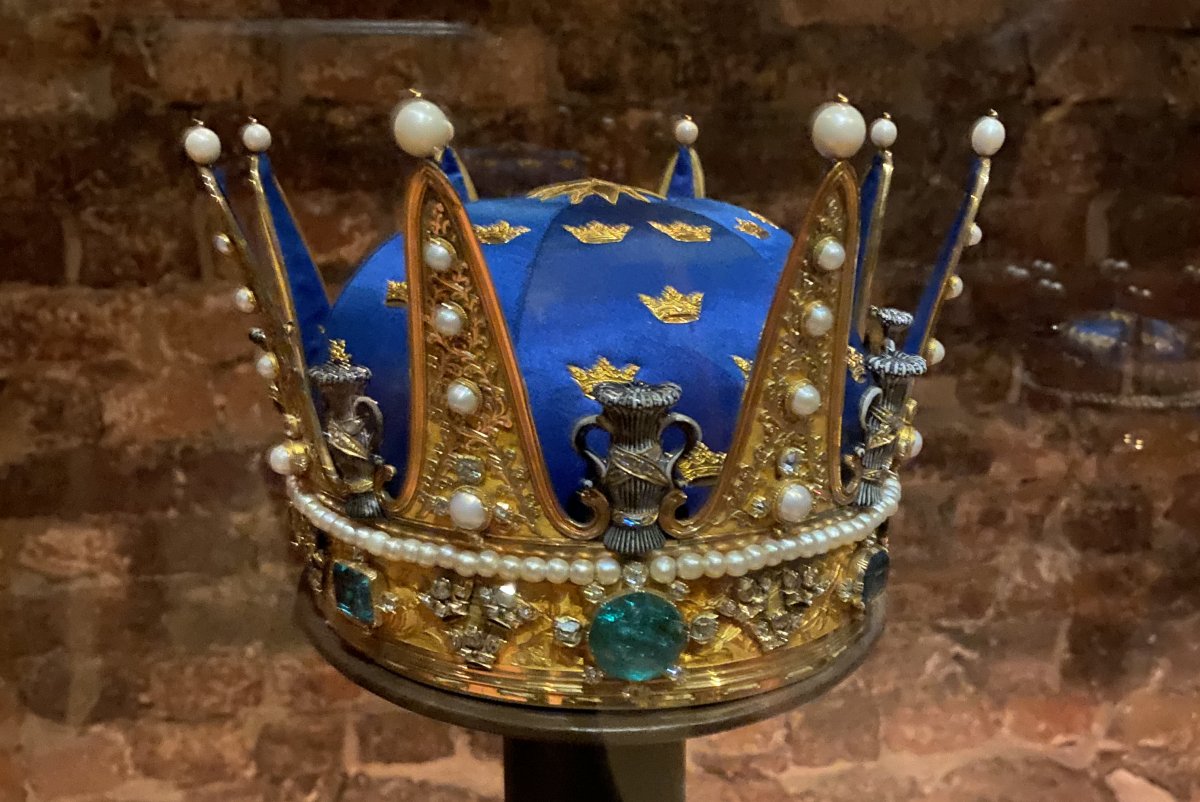
Yesterday marked the 51st anniversary of the death of King Gustav VI Adolf of Sweden and the accession of his grandson, King Carl XVI Gustaf. In honor of the King’s accession day, we’ve got a closer look at the unique collection of crowns owned–but not worn–by members of the Swedish royal family.
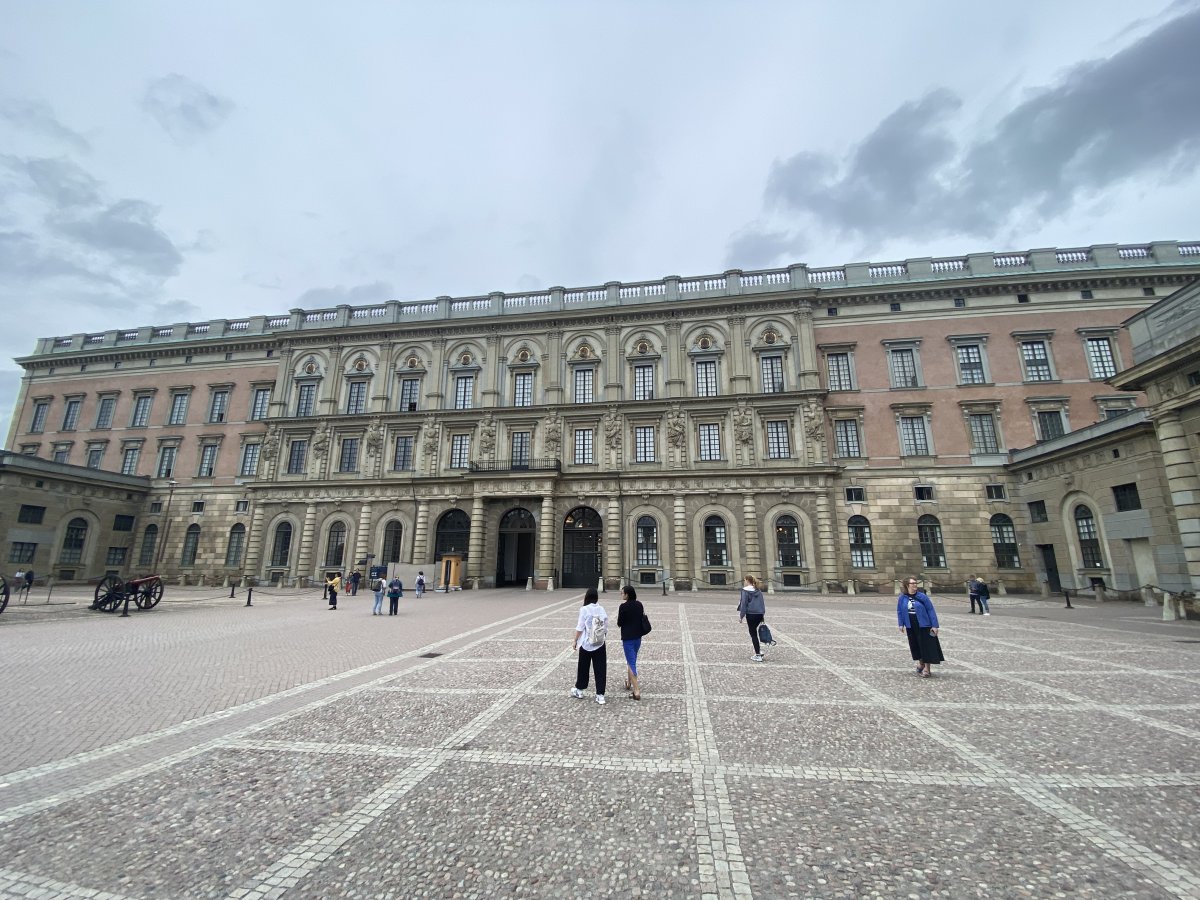
We’re taking a virtual trip to the treasury inside the Royal Palace in Stockholm today, courtesy of the generosity of one of our lovely readers, Thomas. He was able to make a visit there in August and snapped some wonderful photographs that he offered to share with all of us. Thank you so much, Thomas!
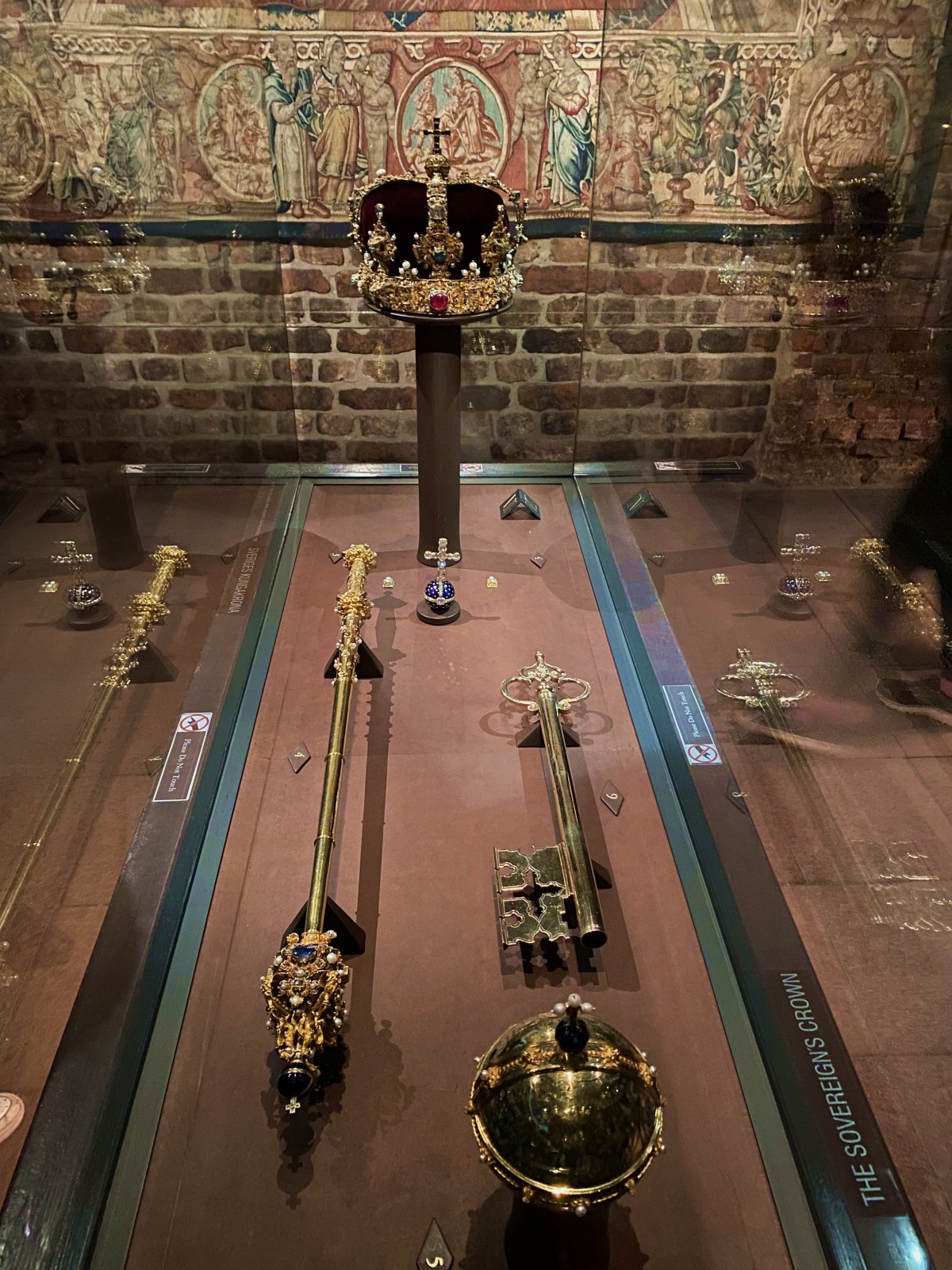
The palace is full of spectacular heirlooms, but for today I thought I’d focus on one section of the royal regalia in particular: the Swedish royal crowns. Most reigning royal families in Europe have at least one or two crowns in their collections. The Swedes have many more than that. But, like most of their European counterparts, they no longer wear them. (The Brits are the only royals in Europe who still wear their crowns.)
Perhaps the most important crown of all in the Swedish royal collection is the one made in 1561 for King Erik XIV of Sweden, who reigned from 1560 until 1569. He used the crown, along with this scepter and orb, at his coronation on June 29, 1561. The display case contains the key of state from his reign as well.
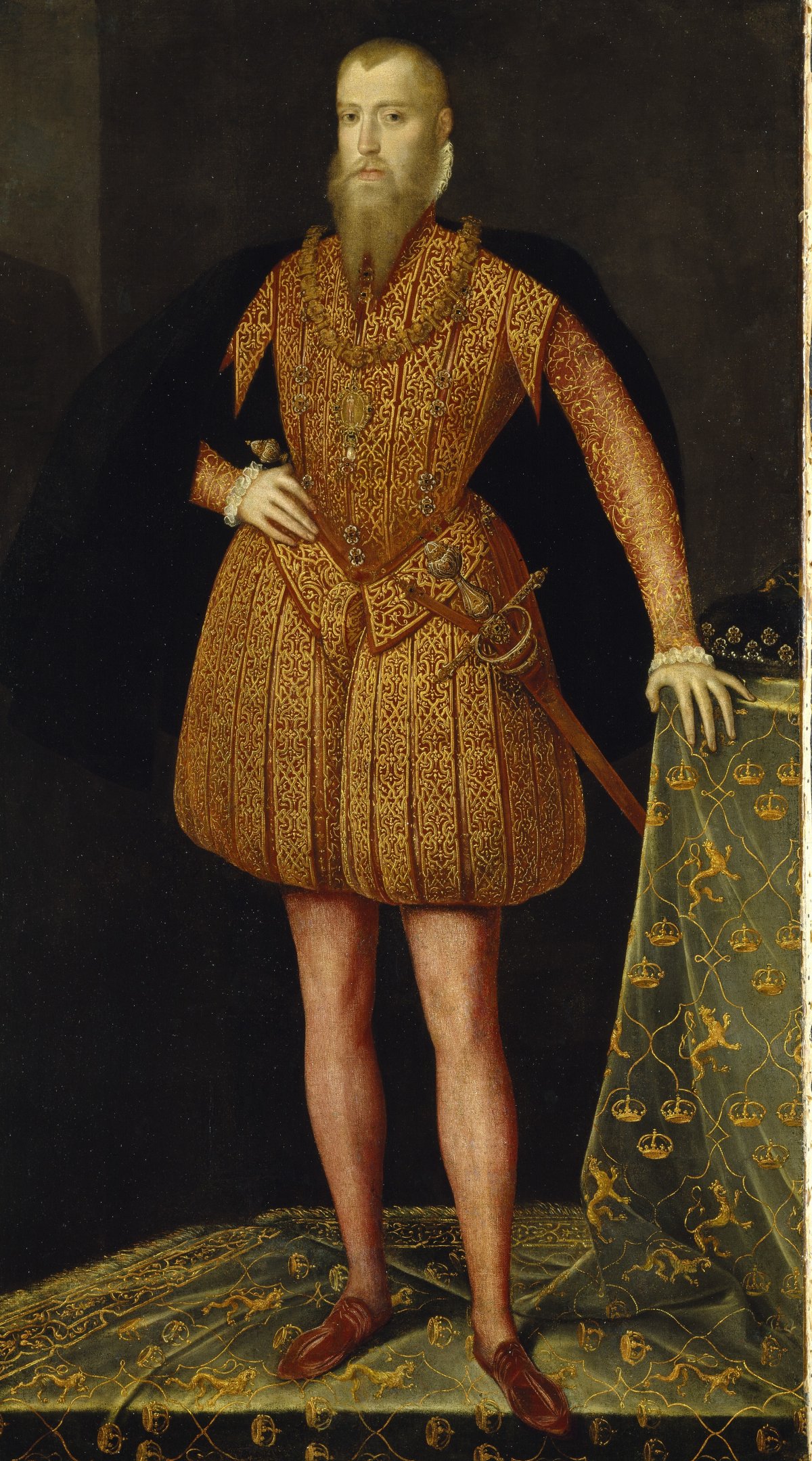
King Erik was the son of Gustav Vasa, whose reign is considered by many to be the foundation of modern Sweden. (The date of his election to the throne is still celebrated as Sweden’s national day.) Erik was an interesting figure. Before and after his own accession to the throne, he aggressively pursued a marriage with one of his contemporaries, Queen Elizabeth I of England. The portrait above was sent to England in an effort to press his suit. Needless to say, those plans failed, as did his overtures to Elizabeth’s cousin, Mary, Queen of Scots. He ended up marrying his mistress, a commoner named Karin Månsdotter. He was clever and artistic, but he also suffered from precarious mental health, which ultimately led to his imprisonment and dethronement in 1569.
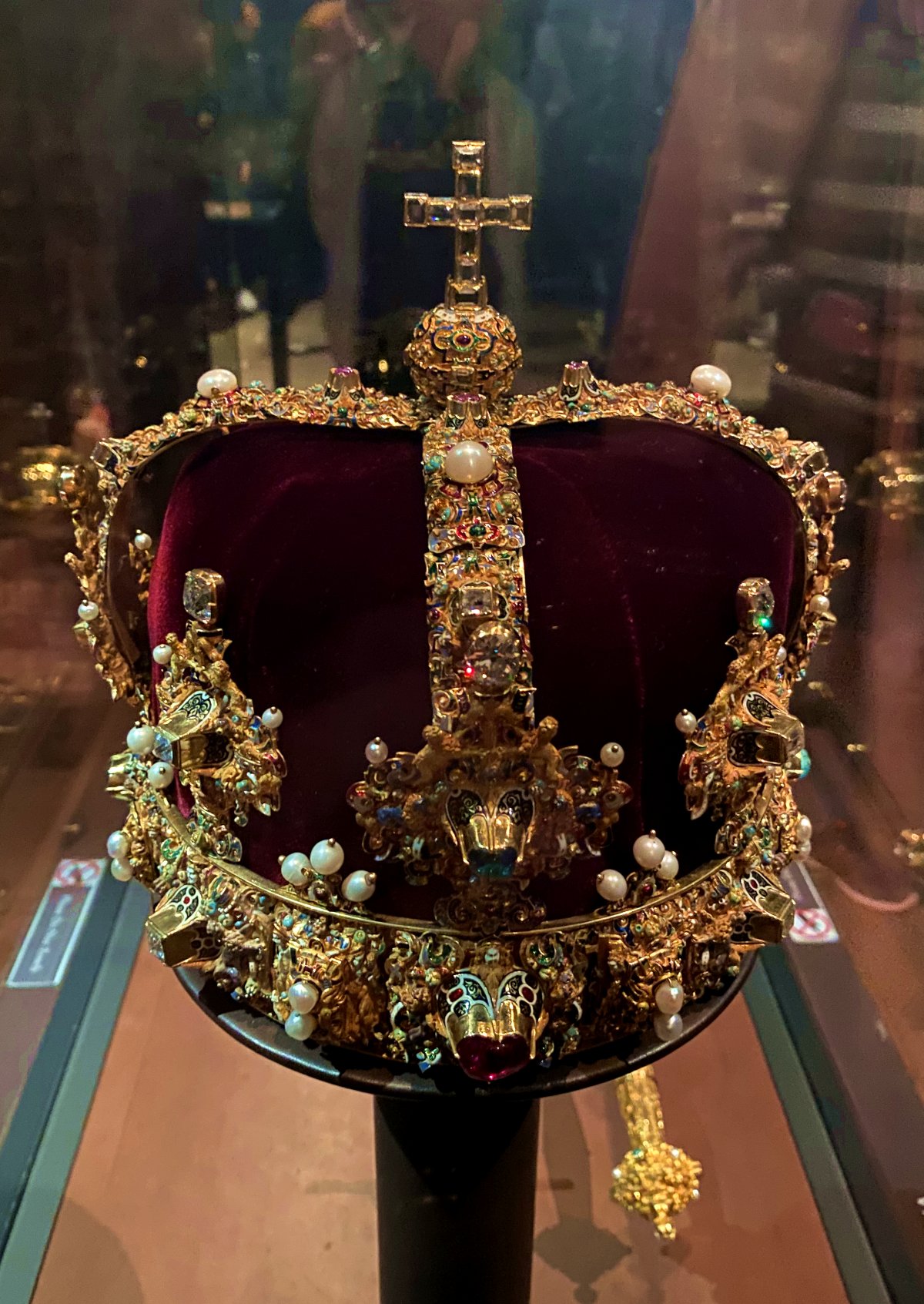
The elaborate crown made for Erik’s coronation is perhaps the most significant relic of his reign 500 years later. It’s still considered the sovereign’s crown today. Made by Cornelis ver Weiden, the crown’s gold frame is decorated with enamel work and gemstones, including pearls, emeralds, rubies, and diamonds. The whole thing weights 1.7 kilograms (or about three and a half pounds, for my fellow Americans). Subsequent monarchs from the House of Vasa were also crowned with Erik’s crown, though the last, Queen Christina, chose a different one.
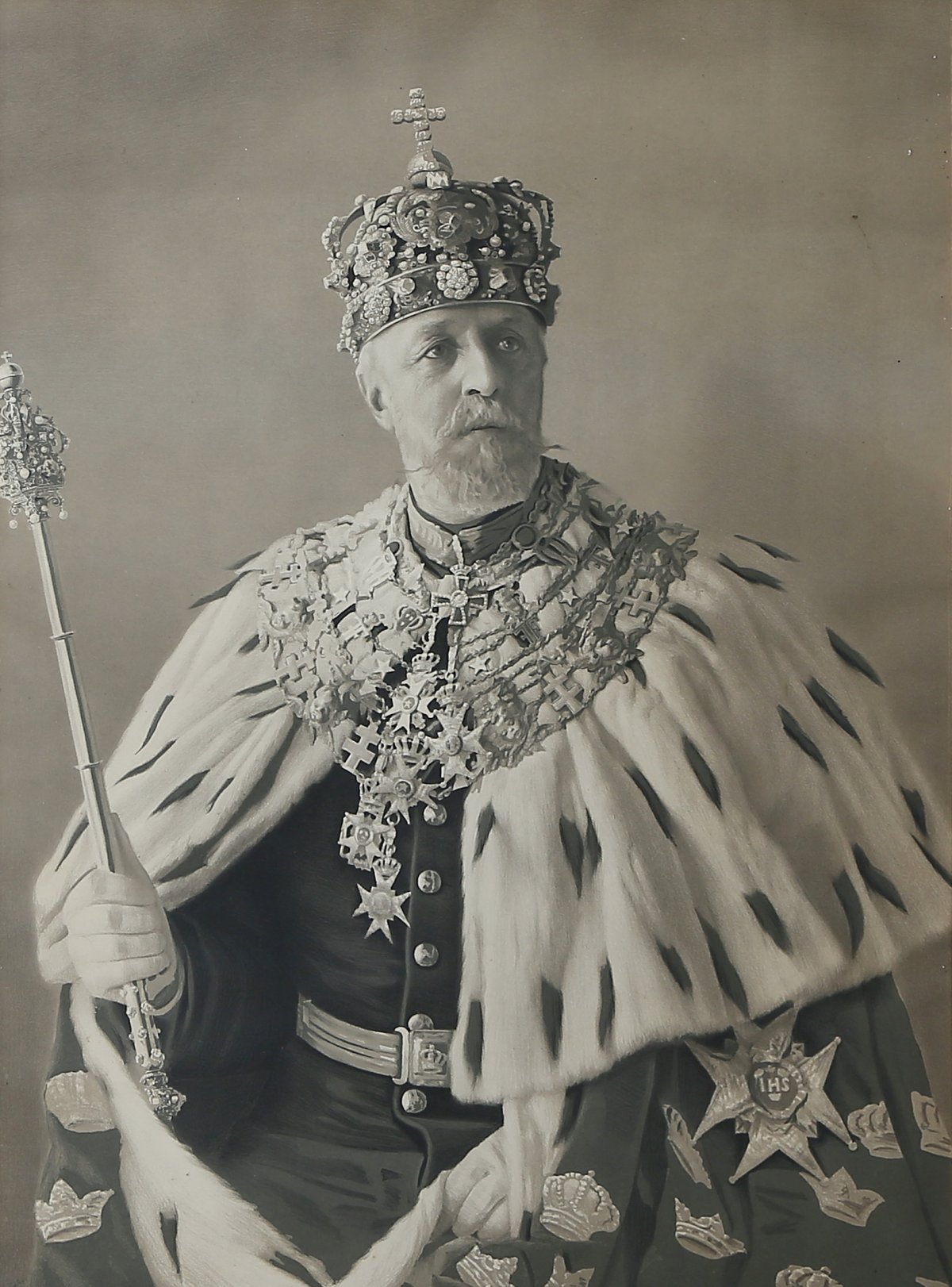
After the Vasa dynasty ended in Sweden in 1654, monarchs from the subsesquent dynasties of Palatinate-Zweibrücken, Hesse, and Holstein-Gottorp chose to be crowned with the same crown that Queen Christina had used. (More on that one in a moment.) When the first Bernadotte monarch, King Carl XIV Johan, was crowned in 1818, he opted to use King Erik’s Renaissance-era crown. But he decided to have it bling-ed up a bit first. He had the monde and crown atop the piece replaced with a blue enameled orb decorated with gold stars and topped with a cross made of ten diamonds. He also had eight diamond rosettes affixed to the crown’s base.
You can see the Bernadotte version of the crown in the portrait photograph of King Oscar II, the last Swedish king to be crowned, above. The changes made were later reversed. The original monde and crown were restored, with the Bernadotte version placed beside the crown in the treasury display case.
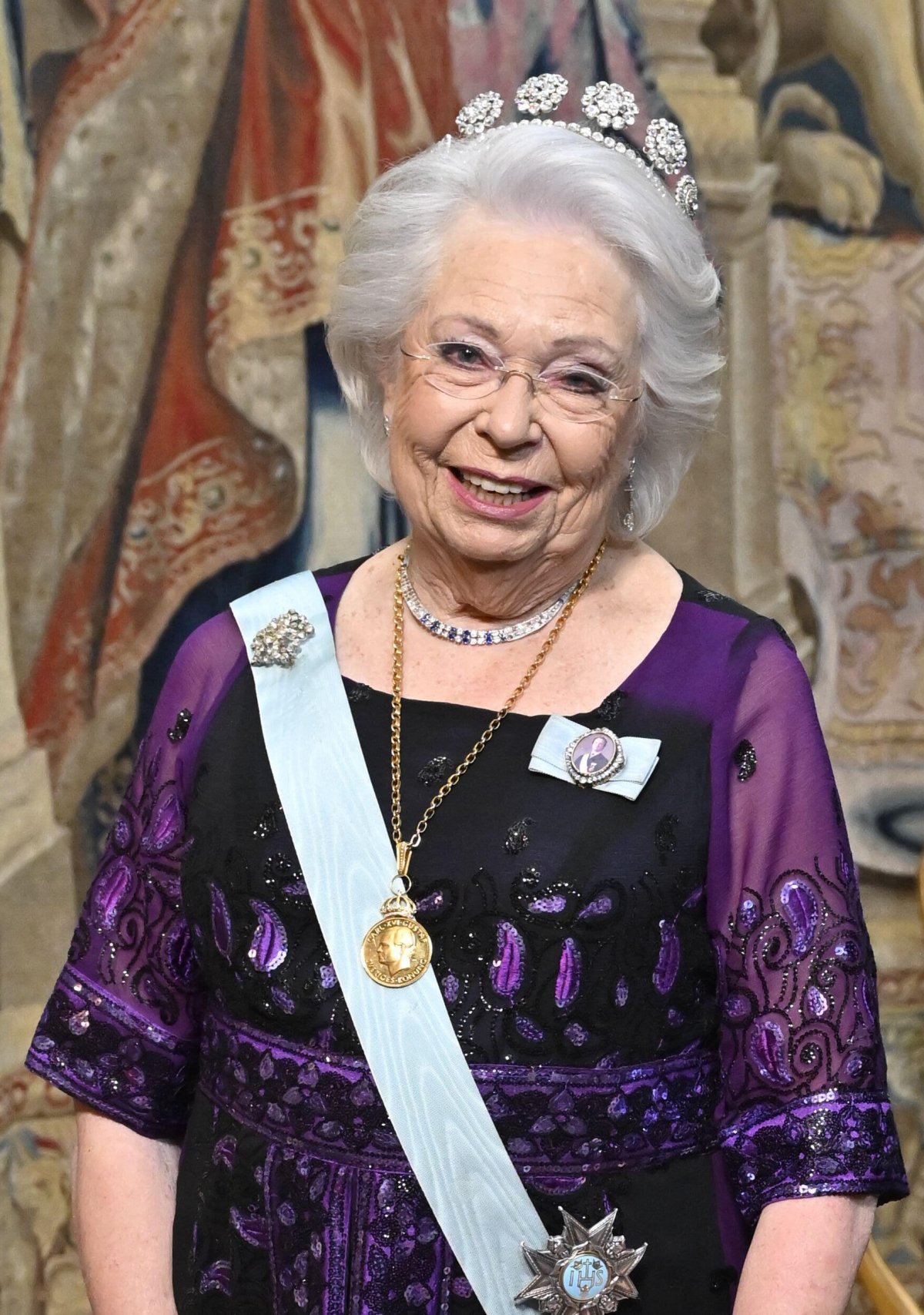
The diamond rosettes were also removed, but rather than simply place them on exhibition, the family decided to innovate. The buttons were placed on a tiara frame instead. The resulting tiara, called both the Six-Button Tiara and the Karl Johan Tiara, is still worn regularly by the ladies of the royal family today. Above, Princess Christina wears the tiara during the Nobel Prize celebrations last December.
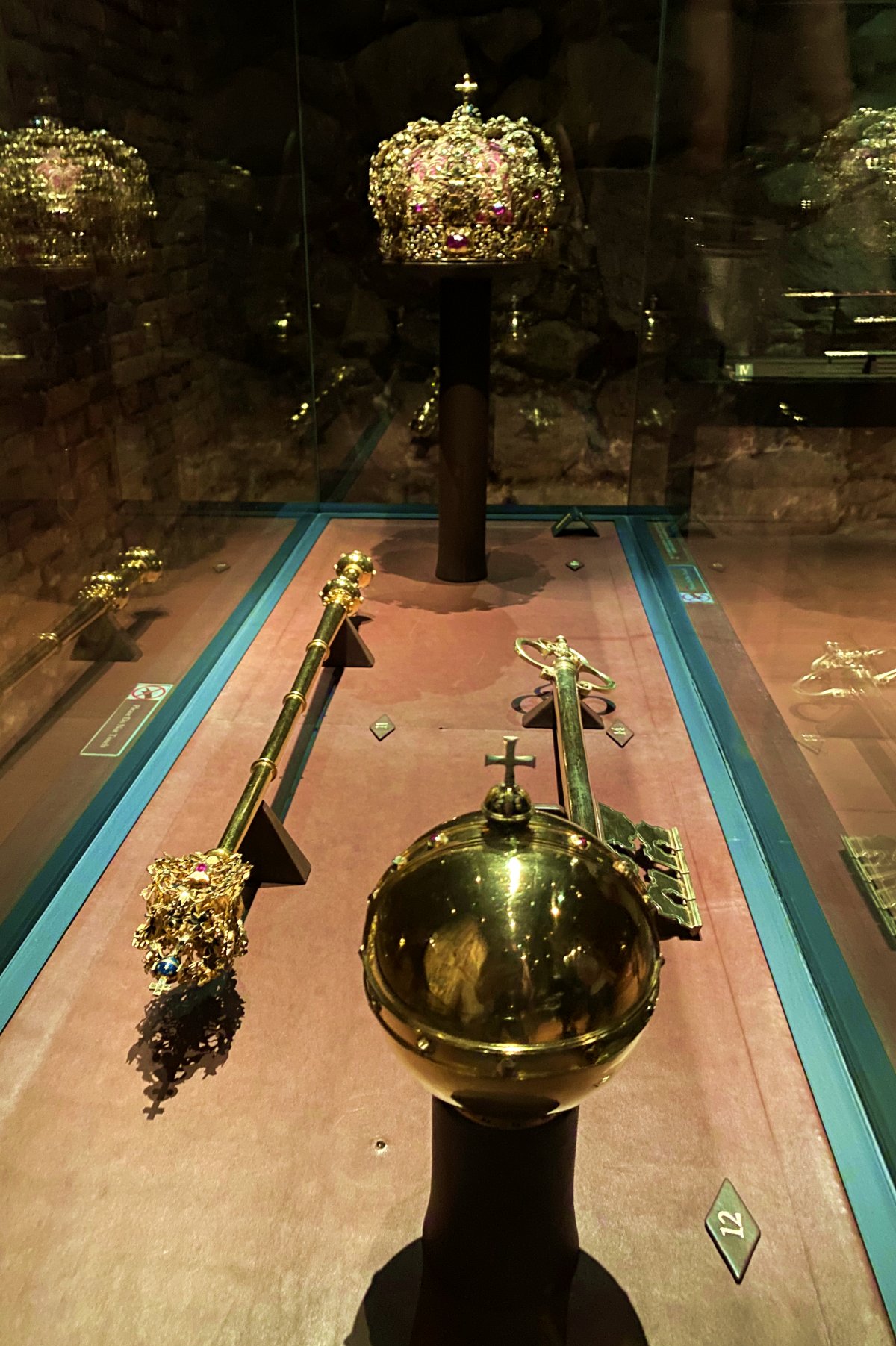
In 1650, the last monarch of the Vasa dynasty, Queen Christina, broke tradition when she chose to wear this crown for her coronation. It had been made for her mother, Queen Maria Eleonora, thirty years earlier by the German goldsmith Ruprecht Miller. The orb and scepter in this case were also made in 1620 for Maria Eleonora, while the key of state was made in 1720 for Queen Ulrika Eleonora, the wife of King Fredrik I of Sweden.
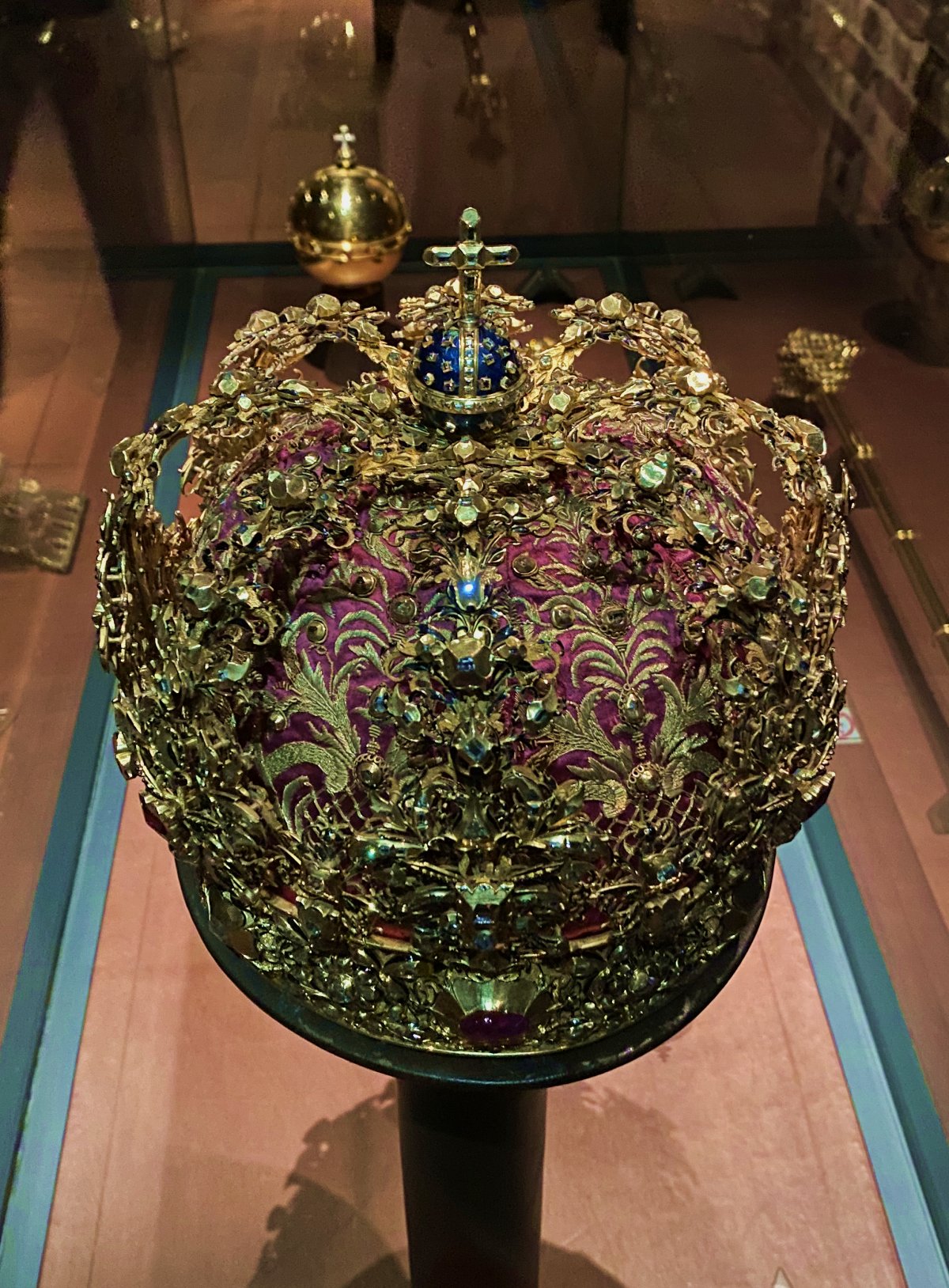
The gold crown is set with diamonds and rubies and features intricate enamel work. Some of the piece’s diamond-set designs are meant to represent the sun, moon, and stars. Originally, the crown did not have arches, but four of them were added ahead of Queen Christina’s coronation in 1650. It’s the heaviest crown in the Swedish collection, weighing 2.5 kilograms (or about five and a half pounds).
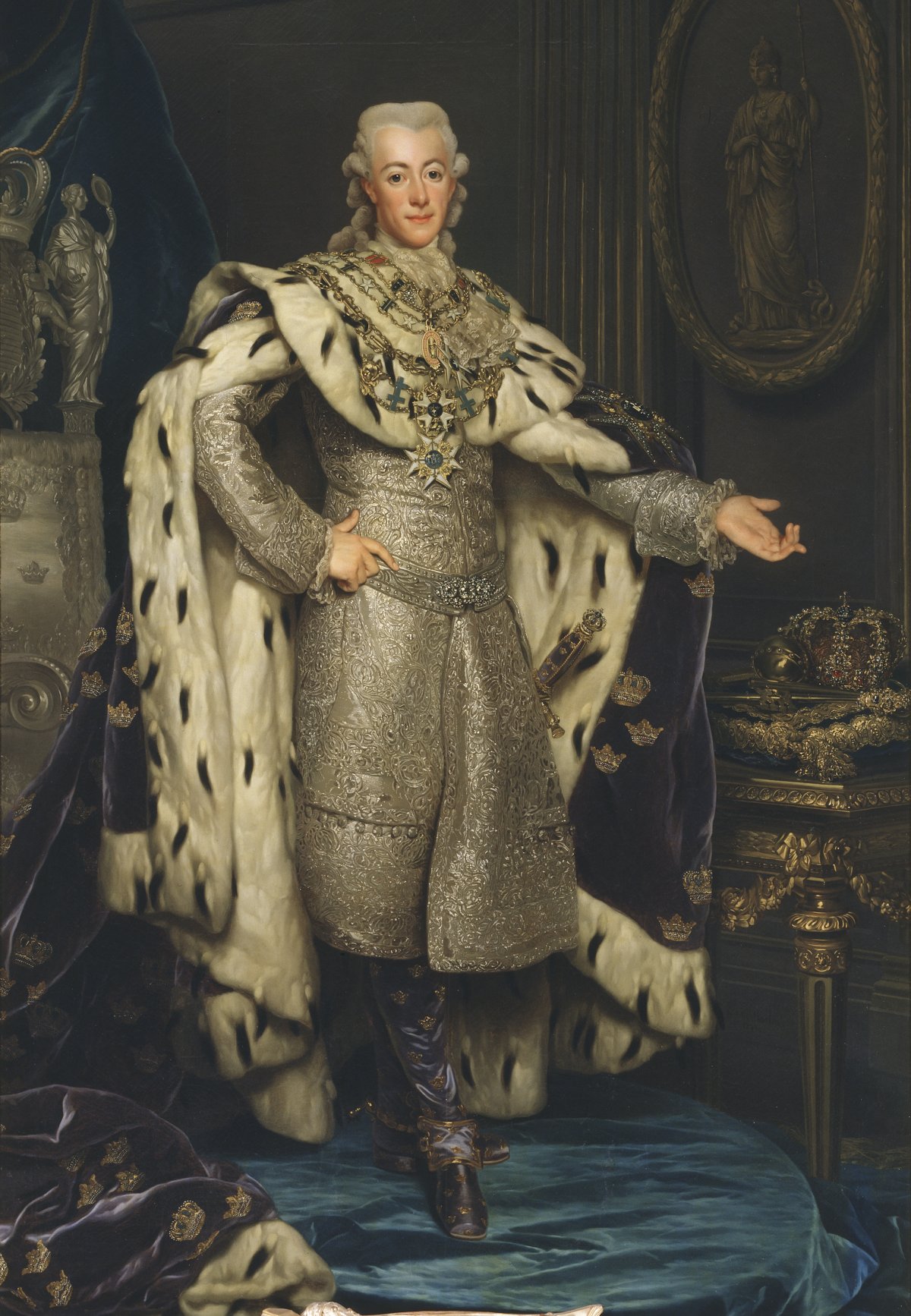
After Queen Christina’s abdication in 1654, the male monarchs from the subsequent dynasties of Palatinate-Zweibrücken, Hesse, and Holstein-Gottorp all chose to be crowned with Maria Eleonora’s crown. It was altered further for those Swedish kings, including significant changes made ahead of the coronation of King Adolf Frederik in 1751. Above, his son, King Gustaf III is pictured standing beside the crown in a state portrait from 1777.
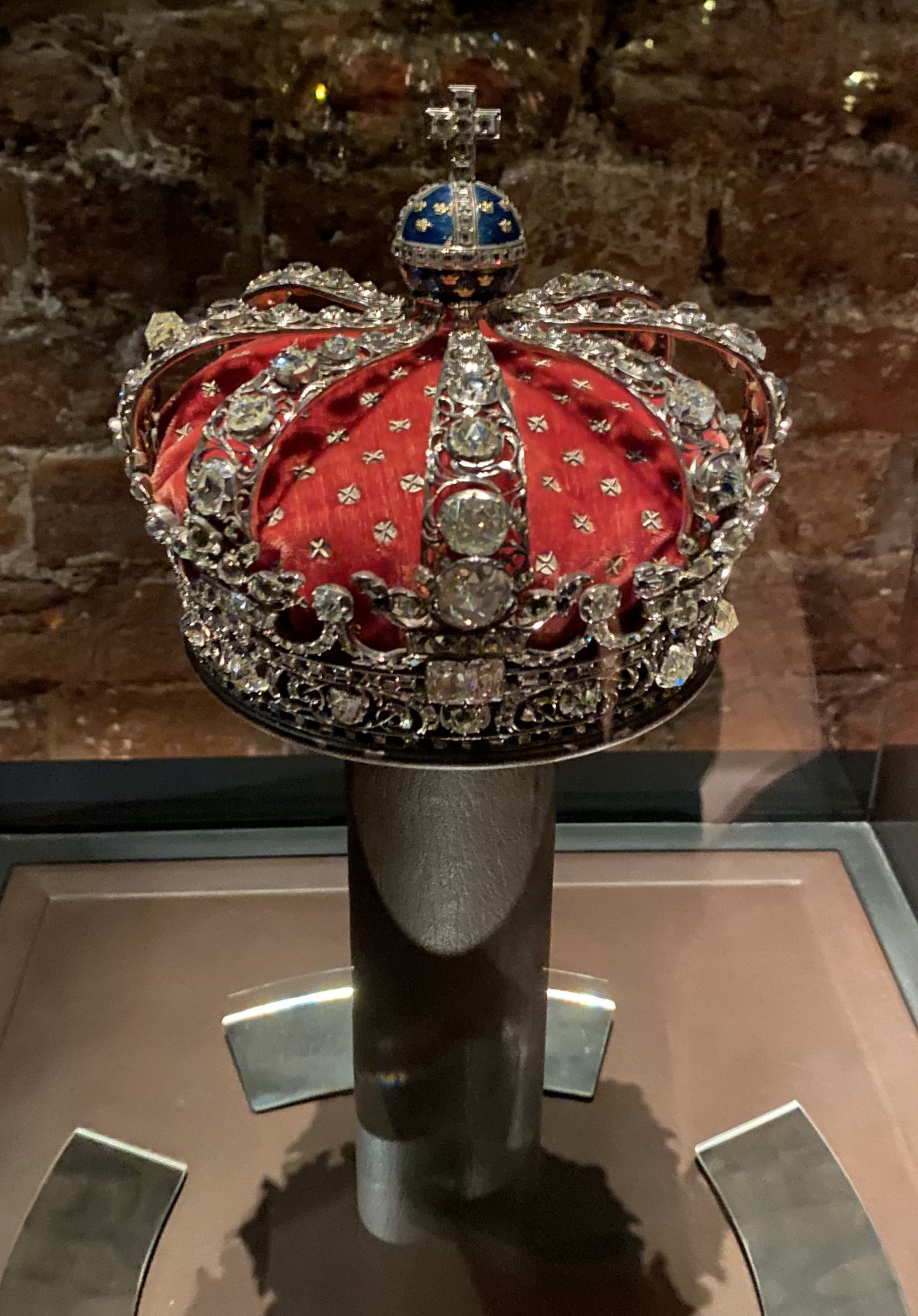
Though no members of the contemporary Swedish royal family wear their crowns, each one is assigned one from the treasury as their personal crown. This silver and diamond crown is Queen Silvia’s crown. It was made in 1751 for Queen Lovisa Ulrika, the wife of King Adolf Fredrik. The jewel is set with a remarkable 695 diamonds in total, and it weighs half a kilogram (or about one pound).
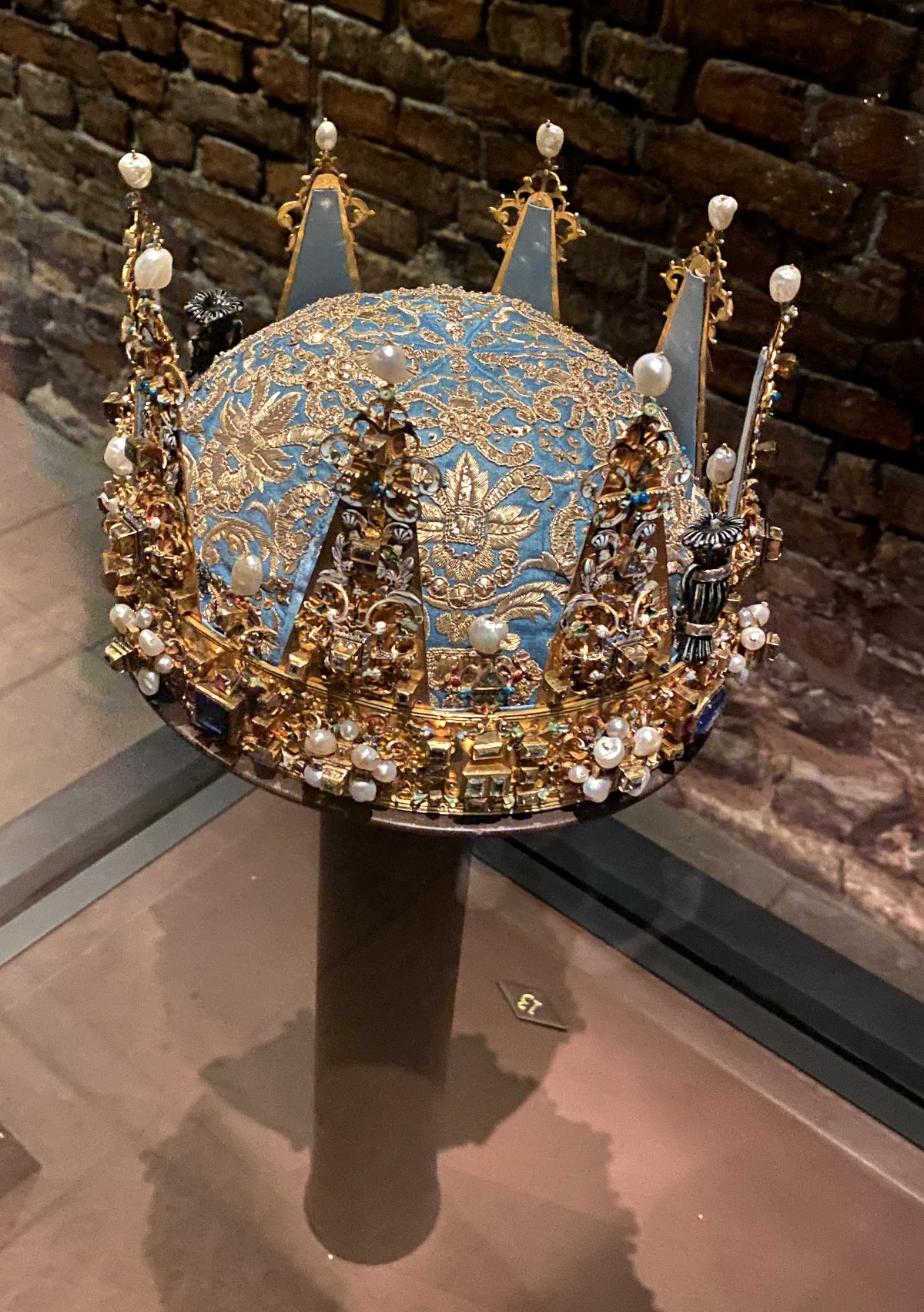
This centuries-old crown is the one assigned to the heir to the throne, currently Crown Princess Victoria. It was originally made in 1650 for Crown Prince Carl Gustaf, the cousin and heir of Queen Christina. He later reigned as King Carl X Gustaf from 1654-1660. The crown is made of gold and decorated with enamel, pearls, and other precious gems. Originally, some of the elements were part of a crown made in 1606 for Queen Christina’s grandmother and namesake, Christina of Holstein-Gottorp. The crown’s gold-embroidered cap dates to 1762.
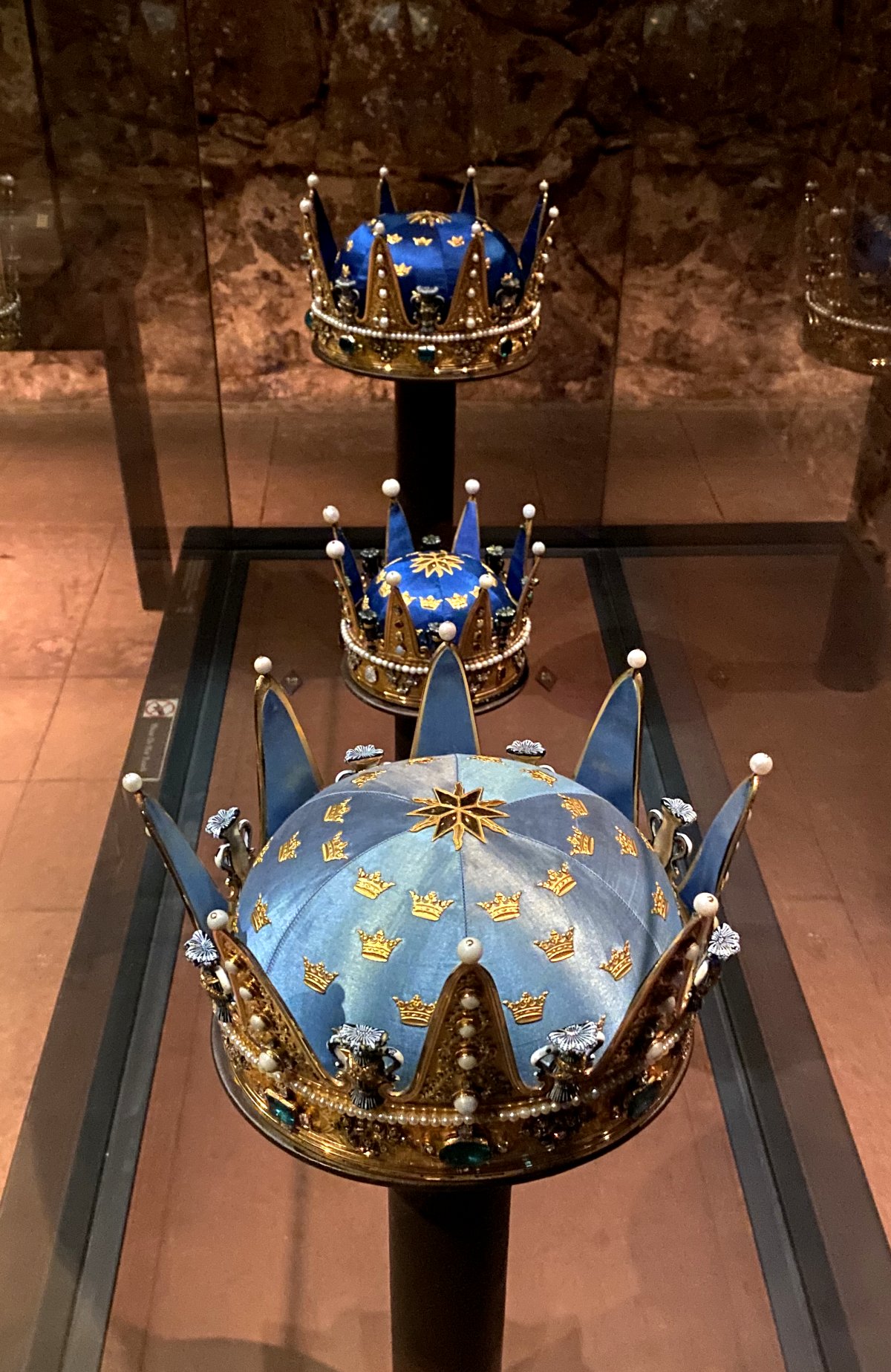
There are also seven more crowns in the royal treasury that were made for Swedish princes and princesses. These three, from top to bottom, were made for Crown Prince Oscar of Sweden (later King Oscar II) in 1844; his sister, Princess Eugenie of Sweden, in 1860; and his grandson, Prince Wilhelm of Sweden, in 1902. Currently, Oscar’s crown is assigned to Princess Estelle, Eugenie’s crown is assigned to Princess Leonore, and Wilhelm’s crown is shared by Prince Daniel and Prince Oscar.
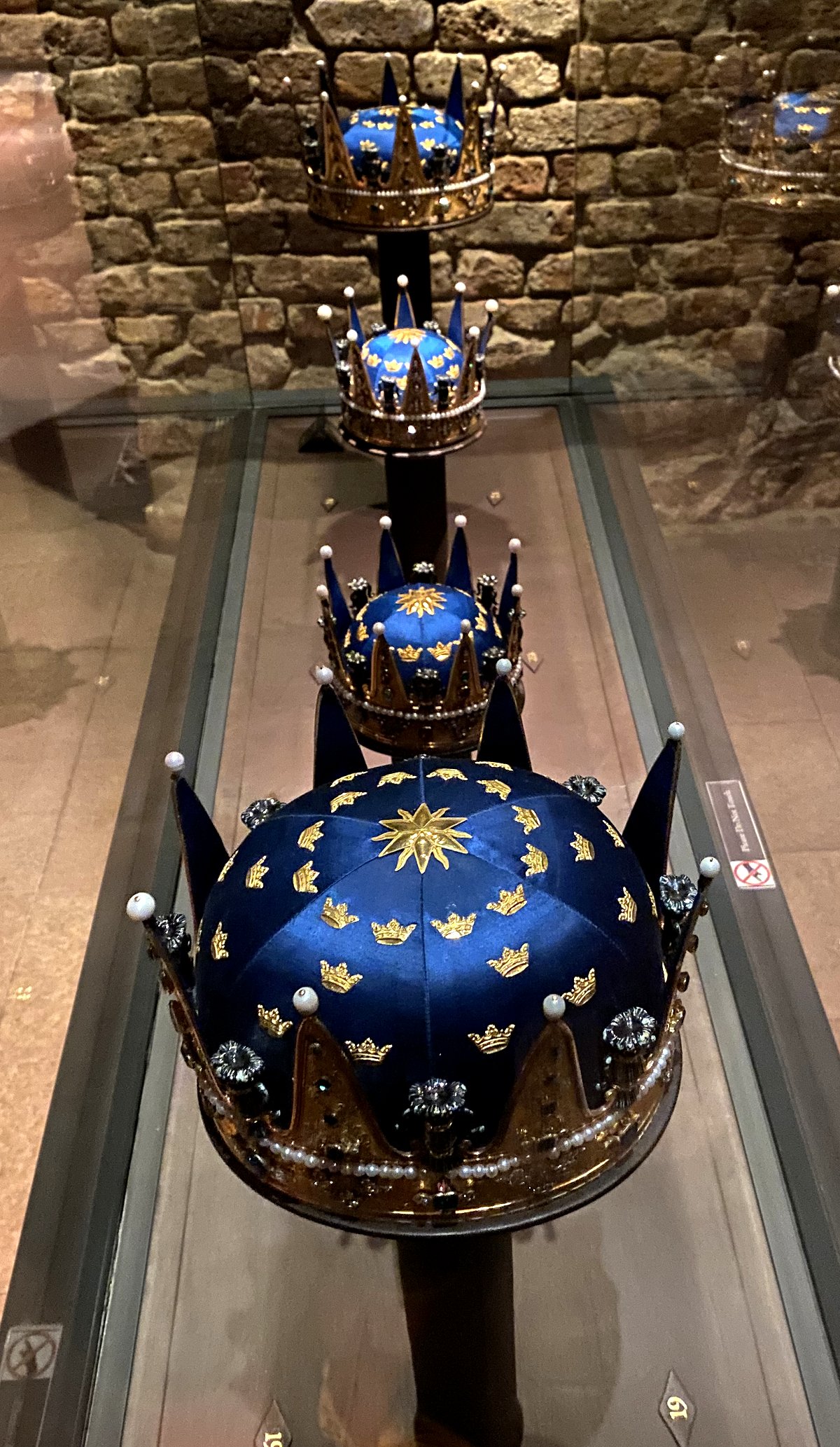
And here are four more princely crowns from the family’s historical collection. From top to bottom, these were made for Prince Carl of Sweden (later King Carl XIII) in 1771; his sister, Princess Sofia Albertina of Sweden, in 1771; his sister-in-law, Princess (later Queen) Hedvig Elisabet Charlotta, in 1778; and his brother, Prince Fredrik Adolf, in 1771.
These crowns are also now assigned to members of the present royal family. Prince Carl’s crown is jointly assigned to Prince Carl Philip and his son, Prince Gabriel, while Princess Sofia Albertina’s crown is assigned to Princess Sofia. Princess Hedvig Elisabet Charlotta’s crown is shared by Princess Madeleine and her son, Prince Nicolas. Prince Fredrik Adolf’s crown is currently assigned to Carl Philip’s second son, Prince Alexander. (Carl Philip has another son, Prince Julian, and a fourth child on the way, while Princess Madeleine has another daughter, Princess Adrienne. I’m not sure if crowns have been assigned to them, as changes have been made to the way that titles and statuses are held within the Swedish royal family.)
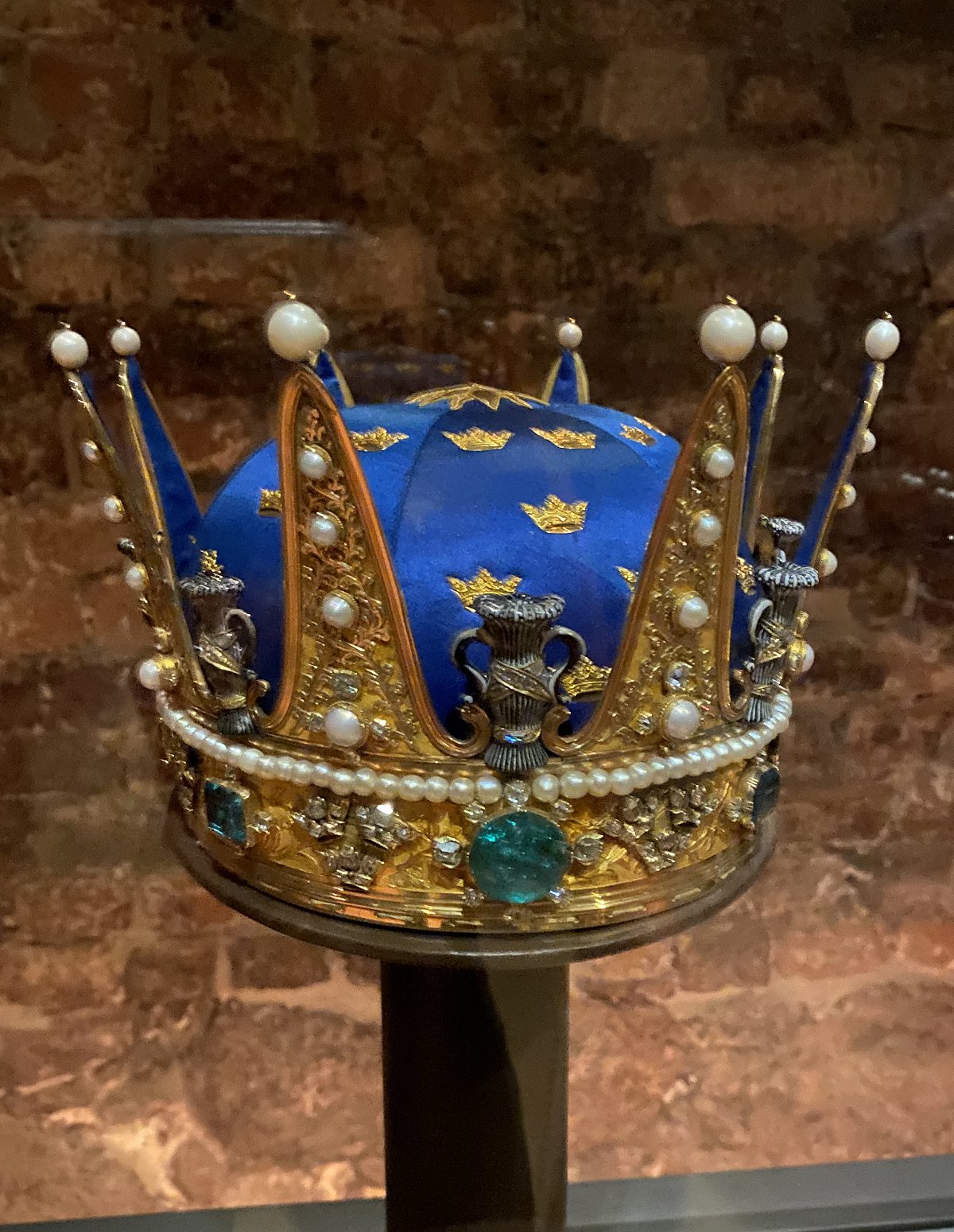
Here’s a slightly better look at Crown Prince Oscar’s 1844 crown, now the crown of Princess Estelle. Note the intricate gold designs, the emeralds, and the unusual design elements situated between the crown’s points. The heraldic element is made to resemble both a vase and a sheaf of wheat. It’s part of the coat of arms of the House of Vasa, the dynasty that helped to found the modern Swedish state 500 years ago. Over the decades and centuries, Scandinavian royals have been keen to emphasize their descent from members of the Vasa dynasty–and one Norwegian princess even wears a tiara that includes the heraldic symbol and bears the house’s name.
Please join me again in thanking Thomas for sharing his wonderful photographs with all of us!
Leave a Reply
You must be logged in to post a comment.